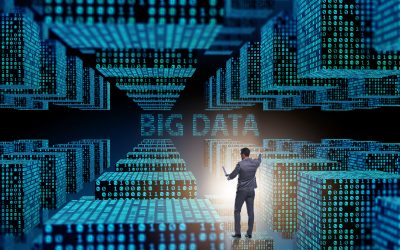
Big data concept with data mining analyst
Artificial intelligence (AI) is reshaping the agriculture industry. Farmers are using AI to optimize production and reduce chemical usage, amongst many other things.
These advancements are critical as the world stares down an impending food shortage. By 2050, the world needs to produce 70 percent more food due to population growth and climate change.
The fuel that drives AI in the agriculture sector is data and predictive analysis. Using predictive analysis, farmers can avoid losses caused by inclement weather or disease.
Read on to learn how farmers are using predictive analytics to accelerate food production. Explore basic predictive models that are changing the agriculture industry for the better.
What Is Predictive Analysis?
Predictive analysis uses data to forecast future events or conditions. It uses many different inputs and methods like statistical analysis, modeling, or machine learning.
The key component of performing predictive analysis is collecting robust and accurate data. This objective is getting easier to accomplish using in-field sensors or modern weather equipment.
The data is certain to reveal patterns and relationships between variables. These discoveries present both risk and opportunity for farmers.
What Is Predictive Analytics Used For?
There are many different reasons that farmers employ predictive analysis. One primary reason is to avoid significant crop loss. If farmers can forecast weather patterns or disease, they can take action to reduce loss.
Farmers also use predictive analysis for product application like fertilizer or pesticides. Modeling results tell farmers when to apply these products and how much.
Crop Forecasting
One way that farmers are using predictive analysis is to forecast the size of their annual crop. These models integrate many factors into a predictive analysis including machine learning and agronomic process.
Data analysts can build off a base model and expand to include additional items. For example, you can start off using New Jersey blueberries or Idaho potatoes. Then, make adjustments to the model to forecast different produce in other regions of the country.
Supply Versus Demand Models
Another valuable predictive model is to forecast supply versus demand in the agriculture industry. This allows producers and agricultural traders to pay a fair and reasonable price.
The objective of modeling supply versus demand is to make farming more profitable. Earning higher profit margins means that farmers are more likely to stay in business and keep critical food sources in operation.
Nitrogen Reduction
Conventional wisdom tells farmers that applying more nitrogen leads to the largest crop yields. However, excess nitrogen can lead to runoffs that produce negative environmental consequences.
Using data from in-field sensors, predictive models tell farmers the optimal amount of nitrogen to apply. The model considers variables such as soil characteristics and weather conditions.
A similar approach is taken for other materials as well. Predictive analysis also tells farmers how much pesticide or fertilizer to use.
Wrapping It Up
With a global food crisis around the corner, the world needs increasing crop yields. Predictive models are one way in which farmers are preparing for this shortage.
If you enjoyed this article about predictive analytics in the agriculture industry and would like to learn more about this topic, contact us.

